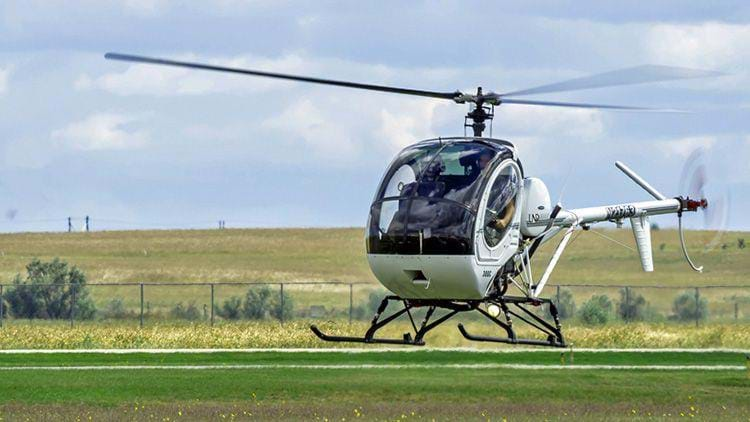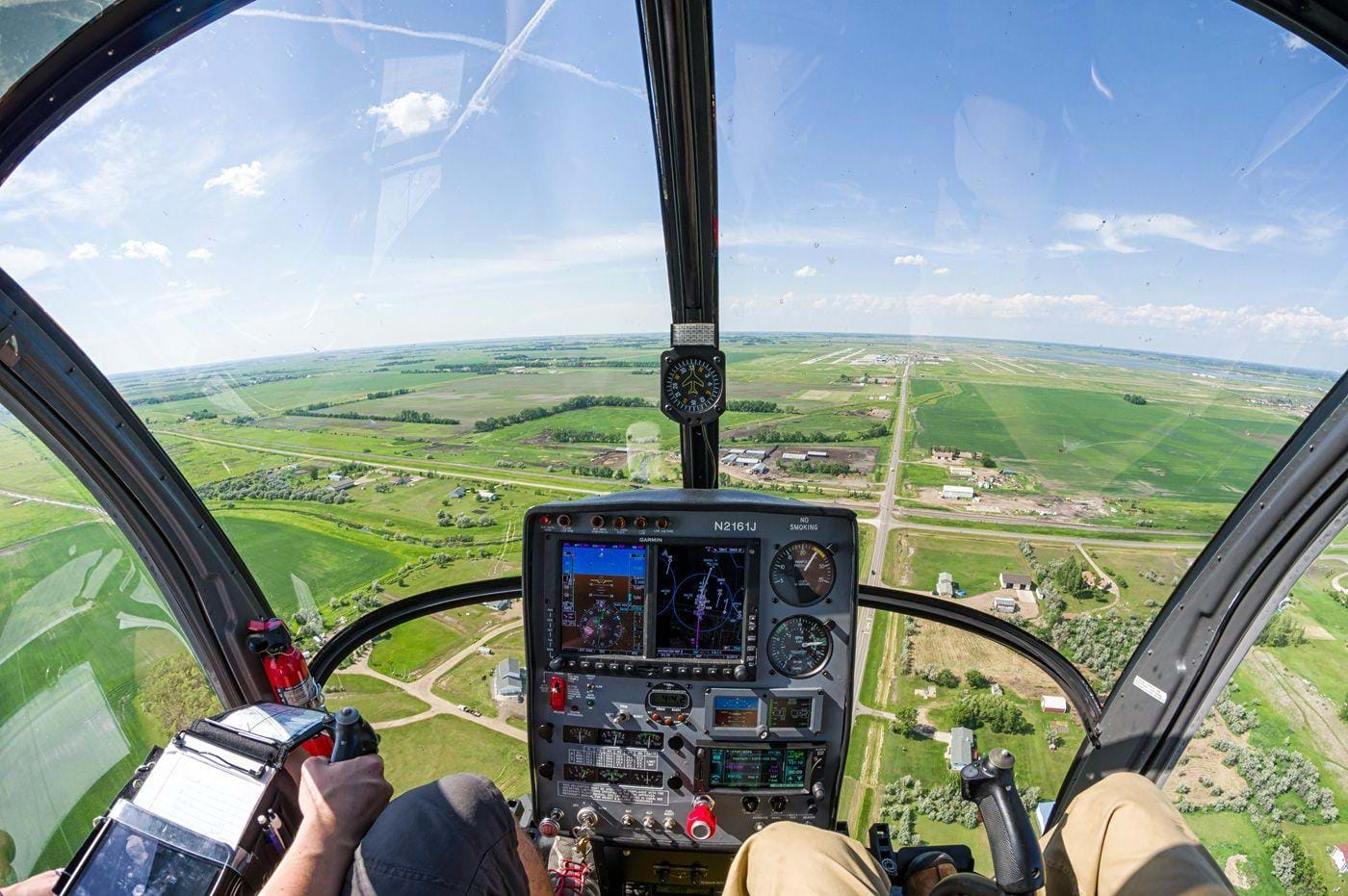
This article is brought to you by UND Aerospace. You can visit their website at heli.aero.und.edu and follow them on Facebook.
When approaching an uncontrolled airport under VFR conditions, there is no control tower to decide the most appropriate traffic pattern to be flown. The current weather and traffic conditions are the primary factors that a tower would normally use to decide which way aircraft should be taking off and landing. The absence of a tower therefore places the responsibility of determining current weather and traffic conditions on the pilot, so that they may decide which way to fly their pattern and land.
It’s important to note that all procedures at uncontrolled fields exist as recommendations only, and that you may occasionally witness pilots deliberately or accidentally deviating from them. A helicopter pilot is recommended by FAA publications to avoid the flow of fixed-wing traffic. In order to do this, the normal flow of fixed-wing traffic should be known prior to arriving at an airport if possible. A standard airplane traffic pattern is a rectangle consisting of only left turns, which begins and ends over the runway and points into the wind. For example: If an airport has a north-oriented runway with a standard traffic pattern and the winds are out of the north, airplanes will likely be taking off to the north, then turning west, then south, then east, then north again to land on the same runway. That same runway may also be used with winds out of the south, in which case planes will likely be observed taking off to the south, turning east, then north, then west, and finally south for landing. It is also possible that an airport uses right-hand traffic due to proximity to some type of hazard or obstacle, and that would be noted in the airport facility directory published by the FAA.
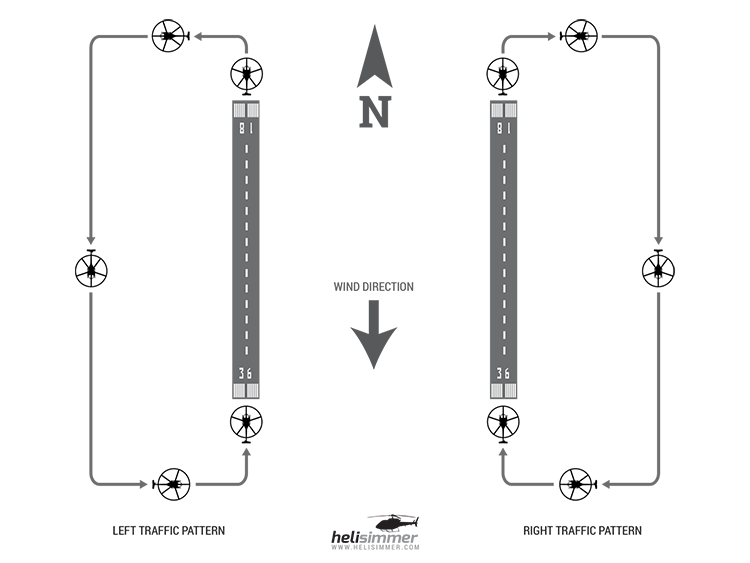
These examples should show the importance of knowing what wind conditions are present. This can be done by listening to the airport’s weather broadcast (AWOS or ASOS) or by use of visual wind indicators located on the airfield during a fly-over. Having determined the weather at your destination airport, you must then visualize where airplanes will be flying their patterns, and avoid them. For example, if airplanes are flying left-hand traffic patterns, you may choose to fly right-hand. This is really only necessary if fixed-wing traffic is present. Regardless of traffic conditions at the field, do your best to land with a headwind. If you have the field to yourself, you may maneuver however you choose in order to align your final approach path with the wind direction.
Once within 10 miles of the airport, you should be utilizing the airport’s published communication frequency (CTAF) to broadcast how you intend to fly your pattern and land. 500 feet AGL is the suggested altitude to fly your pattern. Keep in mind that the unique capabilities of the helicopter allow you to land on airport surfaces other than the runway. A good example of this is when the wind direction does not favor any particular runway. In that case, it would be safer and more expeditious for you to proceed directly to the parking ramp into the wind. While this can greatly increase your efficiency, be sure to communicate your intentions clearly since they are likely to confuse airplane pilots.
Arriving at a tower-controlled field in a helicopter is a much different experience. You will not have to decide how to fly your pattern or which way to land, because this will be dictated to you by the air traffic controller. This reduces the pilot’s decision-making requirements, but also requires that you quickly read-back, understand, and comply with your landing instructions.
Typically, you can gain an advanced understanding of the current traffic pattern direction in use at the airport by listening to their ATIS frequency broadcast. Once you have the current airport information, you will be required to establish communication with the airport’s tower before entering their airspace. This should allow you adequate time to figure out how to comply with your arrival instructions. If an airport is of sufficient traffic density, it is likely that there will be an additional radio frequency that you may contact once within approximately 30 miles of the airport. If there is such a frequency, you would contact them before the tower. It will be listed in the airport facility directory as an “approach control”. If such a frequency is available, it should be used. This will allow air traffic controllers to use radar to alert you to other traffic which may pose a collision threat to you.
[caption id="attachment_2301" align="alignnone" width="750"]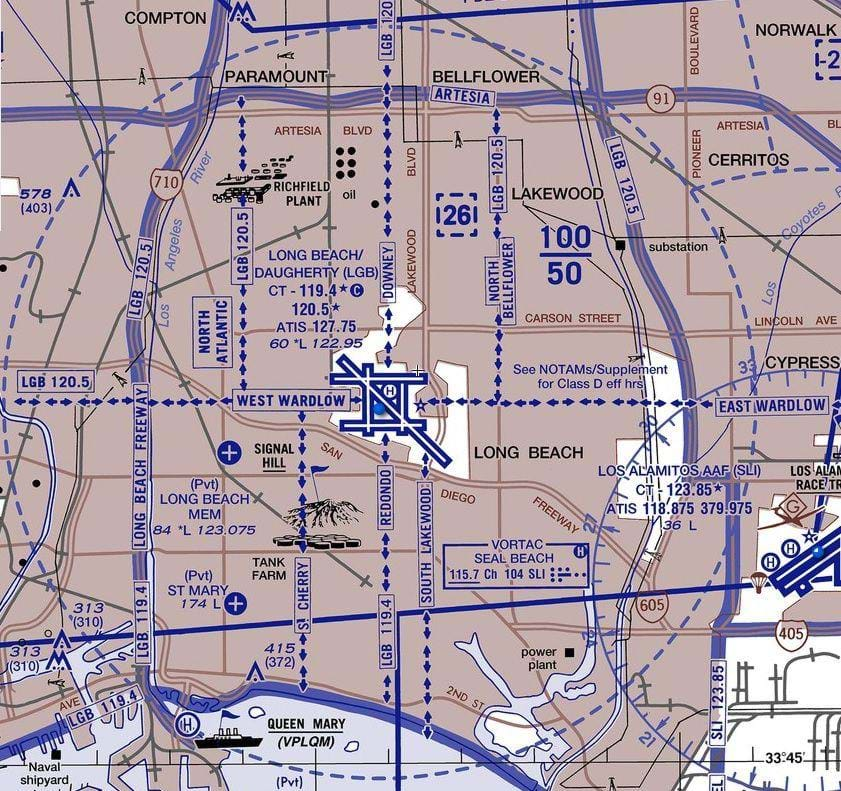 Note that at Long Beach airport all the helicopter arrival routes direct you between the parallel runways to separate helicopters from fixed wing traffic[/caption]
Note that at Long Beach airport all the helicopter arrival routes direct you between the parallel runways to separate helicopters from fixed wing traffic[/caption]
Some controlled airports, such as Long Beach in California and Grand Forks in North Dakota, have enough helicopter operations on a daily basis that they have their own rules specific to their airfield. These rules are recorded in a document called a letter of agreement (LOA). If you are based on a field with a letter of agreement on file, you should be very familiar with it to ensure that you comply with all instructions accurately. There is a wide variety of formatting and procedural differences in different LOAs, but most attempt to keep helicopter traffic in-between the parallel runways, and therefore away from airplanes flying their patterns. It is important to note that helicopters at these high density airports will most likely not be directed to a runway, but instead to a helipad or even directly to parking. If there are no helipads present, ATC will often issue “proceed at your own risk” commands to the helicopter allowing you to make your own path away from other traffic directly to your landing area. These instructions give you flexibility for determining your route to the parking ramp, but puts the responsibility on you to maintain obstacle and traffic clearance. This type of instructions is only given to “non-movement” areas, such as parking ramps, whereas specific landing clearances are given to numbered runways and helipads.
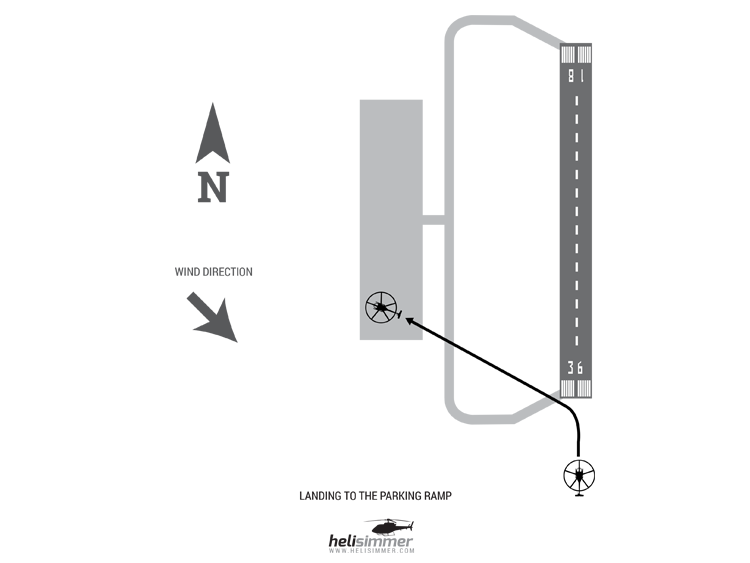
Regardless of what type of airport you are flying to, the most important thing for any VFR helicopter to do is remain vigilant through proper collision avoidance scanning. This, coupled with clear and concise communication techniques, should ensure that you arrive at your destination safely.
Credits: Photo by Wes Van Dell

